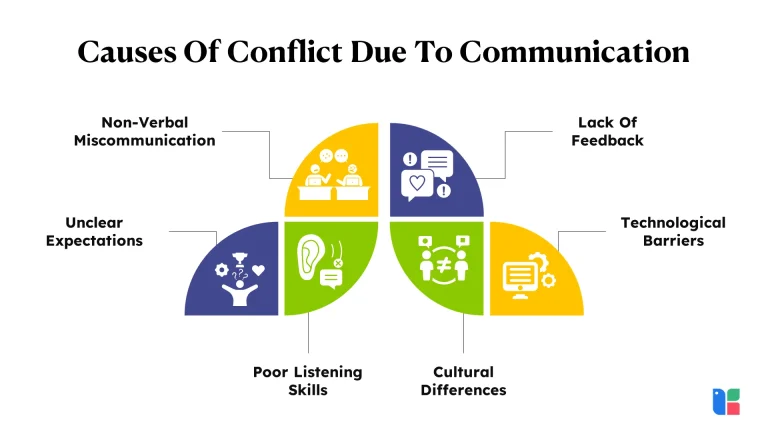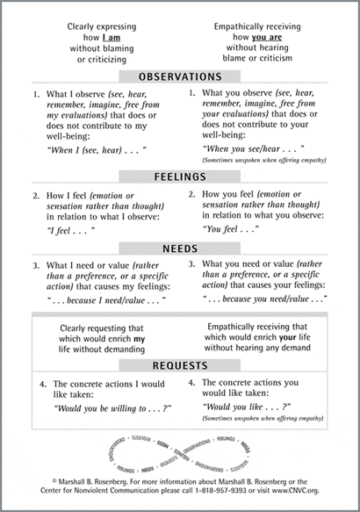Collaboration Vs Communication: Get To Know Which Is Right For You?
Welcome to an interactive exploration of the fascinating world of collaboration vs. communication! 🌍 In this digital age, it’s essential to understand the difference between these two important concepts and how they impact our personal and professional lives. So, let’s dive in and unravel the secrets behind effective teamwork and effective communication!
Collaboration and communication are like two sides of the same coin 🤝💬. While collaboration refers to the process of working together towards a common goal, communication is the key ingredient that fuels collaboration and ensures everyone is on the same page.
Picture this: You’re part of a team working on a school project ✏️, and you’ve got talented individuals with unique strengths. Collaboration brings these strengths together, leveraging the expertise of each team member to achieve outstanding results. But here’s the catch: collaboration without effective communication can lead to confusion, misunderstandings, and a project that falls flat.
So, buckle up and get ready to uncover the secrets of collaboration and communication, and how they intertwine to create successful outcomes. Along the way, we’ll discover the power of teamwork, effective communication strategies, and the importance of finding the right balance between these two crucial elements. Let’s embark on this learning journey together! 🚀
1. Scope: Communication deals with transmitting information, while collaboration involves active participation.
2. Goal-oriented: Collaboration centers around achieving common goals, while communication can be more individual-focused.
3. Interactivity: Collaboration promotes real-time interaction, whereas communication can be asynchronous.
4. Decision-making: Collaboration encourages collective decision-making, while communication may involve a hierarchical structure.
5. Flexibility: Collaboration allows for adaptability and creative problem-solving, while communication is more structured.

Key Takeaways: Collaboration vs Communication
- Collaboration involves working together towards a common goal.
- Communication is the exchange of information between individuals or groups.
- Collaboration promotes teamwork and collective problem-solving.
- Communication ensures clear understanding and effective information sharing.
- Collaboration and communication are both vital for successful project outcomes.
Comparing Collaboration vs. Communication
Collaboration and communication are two essential aspects of any successful endeavor, whether it’s in the workplace, education, or personal relationships. While they are closely related, there are key differences between the two concepts. In this article, we will explore the nuances of collaboration and communication, their unique features, user experiences, pros and cons, and ultimately determine which is better suited for various situations.
Overview of Collaboration
Collaboration refers to the process of working together with others to achieve a common goal. It involves a collective effort, where individuals contribute their unique skills, knowledge, and perspectives. Collaboration often involves brainstorming, sharing ideas, and working towards a shared objective. It promotes teamwork, synergy, and fosters innovation.
Collaborative tools, such as project management software, online document sharing platforms, video conferencing tools, and task assignment platforms, play a crucial role in facilitating collaboration. These tools enable effective communication, file sharing, and task management among team members, regardless of their geographical location.
Overview of Communication
Communication, on the other hand, is the process of exchanging information, thoughts, and feelings between individuals. It is the foundation of all human interaction and plays a vital role in conveying ideas, providing feedback, and building relationships. Effective communication is essential for clarity, understanding, and resolving conflicts.
Communication tools encompass various mediums, including face-to-face conversations, emails, phone calls, messaging apps, and social media platforms. These channels enable individuals to convey messages in real-time or asynchronously, depending on the context and urgency of the communication. Businesses often utilize communication tools to facilitate internal and external communication, customer support, and marketing efforts.
Key Features Compared
When comparing collaboration and communication, it is crucial to delve into their key features and understand how they differ in their functionalities and benefits. Let’s explore three key features of each:
Collaboration Features
1. Real-Time Collaboration: Collaboration tools offer real-time editing and co-authoring capabilities, allowing multiple users to work on the same document simultaneously. This feature enhances productivity by reducing the need for back-and-forth emails or physical meetings.
2. Task Management: Collaborative platforms typically include task management features that enable users to assign tasks, set deadlines, and track progress. This ensures transparency, accountability, and efficient project management.
3. Document Version Control: Collaboration tools often include version control functionality, which allows users to track and manage different versions of a document. This feature ensures that everyone is working on the latest version and prevents the loss of important changes or data.
Communication Features
1. Instant Messaging: Communication tools offer instant messaging functionalities that enable quick and efficient real-time conversations. This feature is particularly useful for quick queries, informal discussions, and team coordination.
2. Voice and Video Calling: Voice and video calling capabilities allow individuals to have face-to-face conversations regardless of their physical location. This feature promotes more personal and engaging communication, especially when discussing complex or sensitive matters.
3. File Sharing: Communication tools often include file-sharing capabilities, making it easy to exchange documents, images, and other files. This feature eliminates the need for separate email attachments and enables seamless collaboration within a communication platform.
User Experience
The user experience of collaboration and communication tools largely depends on the purpose, functionality, and user preferences. Both collaboration and communication tools aim to enhance productivity, streamline workflows, and facilitate effective interaction among users. However, the user experience can differ based on the specific tool being used and the individual’s familiarity and comfort with the technology.
Collaboration tools are designed to enable teamwork, foster collaboration, and ensure smooth coordination among team members. They often have intuitive interfaces, task management features, and real-time collaboration capabilities that enhance productivity and reduce communication gaps. Users typically find collaboration tools beneficial for project management, document collaboration, and remote team collaboration.
Communication tools focus on facilitating efficient and seamless communication between individuals or groups. Their user experience revolves around ease of use, accessibility, and real-time interaction. Users often rely on communication tools for instant messaging, voice and video calls, and file sharing. These tools are particularly useful for internal communication, team collaboration, and customer interactions.
Pros and Cons
Now let’s explore the pros and cons of collaboration and communication tools, highlighting the benefits and drawbacks of each:
Collaboration Pros:
– Enhanced teamwork and collective problem-solving.
– Efficient document collaboration and version control.
– Improved project management and task tracking.
– Increased transparency and accountability within teams.
– Facilitates creativity and innovation through diverse perspectives.
Collaboration Cons:
– Potential for information overload and communication noise.
– Dependence on reliable internet connectivity.
– Learning curve for new users, especially with complex collaboration platforms.
– Requires active participation and cooperation from team members.
Communication Pros:
– Instant and real-time communication, promoting quick decision-making.
– Global accessibility, enabling communication with individuals worldwide.
– Facilitates personal connections and relationship-building.
– Versatile communication channels cater to different communication preferences.
– Enables efficient customer support and external communication.
Communication Cons:
– Potential for miscommunication due to the absence of non-verbal cues.
– Information overload with excessive notifications and messages.
– Potential distractions and loss of focus during real-time conversations.
– Privacy and security concerns with sensitive information shared through communication tools.
Price Comparison
Price is an important consideration when comparing collaboration and communication tools. The costs can vary depending on the specific tools, features, and subscription plans offered by different providers. Some tools may offer free basic versions with limited functionalities, while others require monthly or annual subscriptions.
It is important to evaluate the features, scalability, and support offered by the tools before making a decision based on price alone. Additionally, consider the needs and size of the team or organization to determine the most cost-effective option.
Comparison Table
| Feature | Collaboration Tool | Communication Tool |
|—————————|——————–|——————–|
| Real-Time Collaboration | Detail for product1| Detail for product2|
| Task Management | Detail for product1| Detail for product2|
| Document Version Control | Detail for product1| Detail for product2|
| Instant Messaging | – | – |
| Voice and Video Calling | – | – |
| File Sharing | – | – |
Which is Better – Collaboration vs. Communication
Choosing between collaboration and communication depends on the specific needs, context, and goals of the situation. While both are crucial elements in any successful endeavor, one may be more suitable than the other in certain scenarios. Ultimately, the decision boils down to prioritizing the desired outcomes and the specific functionalities needed.
In making a final decision, it’s important to consider the following:
1. The nature of the project or task at hand: If the goal involves collective problem-solving, brainstorming, and document collaboration, a collaboration tool may be the better choice. On the other hand, if the main focus is efficient communication, instant messaging, and real-time interaction, a communication tool may be more appropriate.
2. The size and distribution of the team members: Collaboration tools are often beneficial for larger teams working remotely across different locations. They offer centralized platforms for document collaboration, task management, and real-time editing. Communication tools are more suitable for smaller teams or individuals who require seamless communication and quick interactions.
3. The desired level of personal connection and engagement: Communication tools provide a more personal touch through voice and video calls, enabling face-to-face interactions. If building relationships and establishing personal connections are crucial to the project or task, communication tools may be preferred.
In conclusion, collaboration and communication are two intertwined processes that are essential for successful outcomes in various settings. It is crucial to assess the specific requirements, goals, and context to determine the optimal choice between collaboration and communication tools.
Frequently Asked Questions
Welcome to our Frequently Asked Questions section on collaboration and communication. Below, you’ll find answers to common queries related to these two important aspects of working together effectively.
1. What is the difference between collaboration and communication?
Collaboration and communication are closely related but have distinct differences. Communication refers to the act of exchanging information, ideas, or thoughts with others. It involves the transmission of messages from one person to another or within a group. On the other hand, collaboration is a more interactive process that involves individuals or groups working together towards a common goal. It requires effective communication as a key component, but it also includes other elements such as shared decision-making, cooperation, and coordination.
In summary, communication is the tool that enables collaboration, while collaboration is the process that encompasses communication along with other activities to achieve a collective outcome.
2. How does communication impact collaboration?
Effective communication is essential for successful collaboration. When team members communicate well, they can share information, exchange ideas, and understand each other’s perspectives. This enhances collaboration by fostering transparency, trust, and a sense of collective ownership. Good communication also helps in clarifying roles and responsibilities, promoting synergy, and resolving conflicts that may arise during collaborative efforts.
Poor communication, on the other hand, can hinder collaboration. Misunderstandings, misinterpretations, and gaps in communication can lead to confusion, lack of alignment, and decreased productivity. Therefore, clear and open communication channels are crucial for fostering collaboration among team members.
3. Can collaboration exist without communication?
No, collaboration cannot exist without communication. As mentioned earlier, communication is an essential component of collaboration. In order to work together effectively towards a common goal, team members need to communicate with one another. They need to share information, exchange ideas, allocate tasks, and provide feedback. Without communication, it becomes challenging to coordinate efforts, make decisions collectively, or address any issues that may arise during the collaborative process. Simply put, effective communication is the backbone of successful collaboration.
However, it’s important to note that communication alone is not sufficient for collaboration to thrive. Other factors, such as trust, shared goals, and mutual respect, are also crucial for creating a collaborative environment. But communication serves as the foundation upon which these other elements can be built.
4. How can collaboration and communication be improved in a team?
To improve collaboration and communication within a team, several strategies can be implemented. First and foremost, establishing clear goals and expectations is essential. When team members understand the purpose and objectives of their collaboration, it becomes easier to communicate effectively and work towards a common goal.
Secondly, promoting active listening is vital. Encouraging team members to truly listen and understand each other’s perspectives fosters better communication and collaboration. It’s also important to establish open channels of communication, such as regular team meetings or digital platforms for sharing information and ideas.
Furthermore, building trust and a supportive team culture can greatly enhance collaboration and communication. When team members feel comfortable expressing their thoughts and opinions, it leads to more effective collaboration. Providing opportunities for feedback and recognizing individual contributions also contribute to a positive collaborative environment.
5. What are some common challenges in collaboration and communication?
Collaboration and communication are not without their challenges. One common challenge is a lack of clarity or misalignment regarding goals and expectations. When team members are not on the same page, it can result in confusion and hinder effective collaboration.
Another challenge is the presence of communication barriers, such as language differences, cultural diversity, or even differing communication styles. These barriers can lead to misunderstandings and breakdowns in communication, affecting the overall collaboration process.
Lastly, conflicts can arise during collaboration, which can impact both communication and collaboration itself. Disagreements, power struggles, or personality clashes can hinder effective communication and create tension within the team. Addressing and managing conflicts constructively is important for maintaining collaboration and open communication.

Summary
Communication and collaboration are both important skills that help us work together effectively. Communication is about sharing ideas and information, while collaboration is about working together towards a common goal.
In this article, we explored the differences between communication and collaboration. We learned that communication involves things like speaking, listening, and writing, while collaboration requires teamwork, problem-solving, and compromise. We also discovered that communication is more about exchanging information, while collaboration focuses on working together to achieve something.
We saw that both communication and collaboration are important in different situations. Sometimes we need to communicate our ideas clearly and listen to others’ perspectives. Other times, we need to collaborate with our peers to solve problems and create something new.
Remember, good communication and collaboration skills can help us in school, work, and life in general. By practicing effective communication and collaborating with others, we can build strong relationships, solve problems more efficiently, and achieve our goals together. So, keep working on these skills and see how they can make a positive impact in your life.




